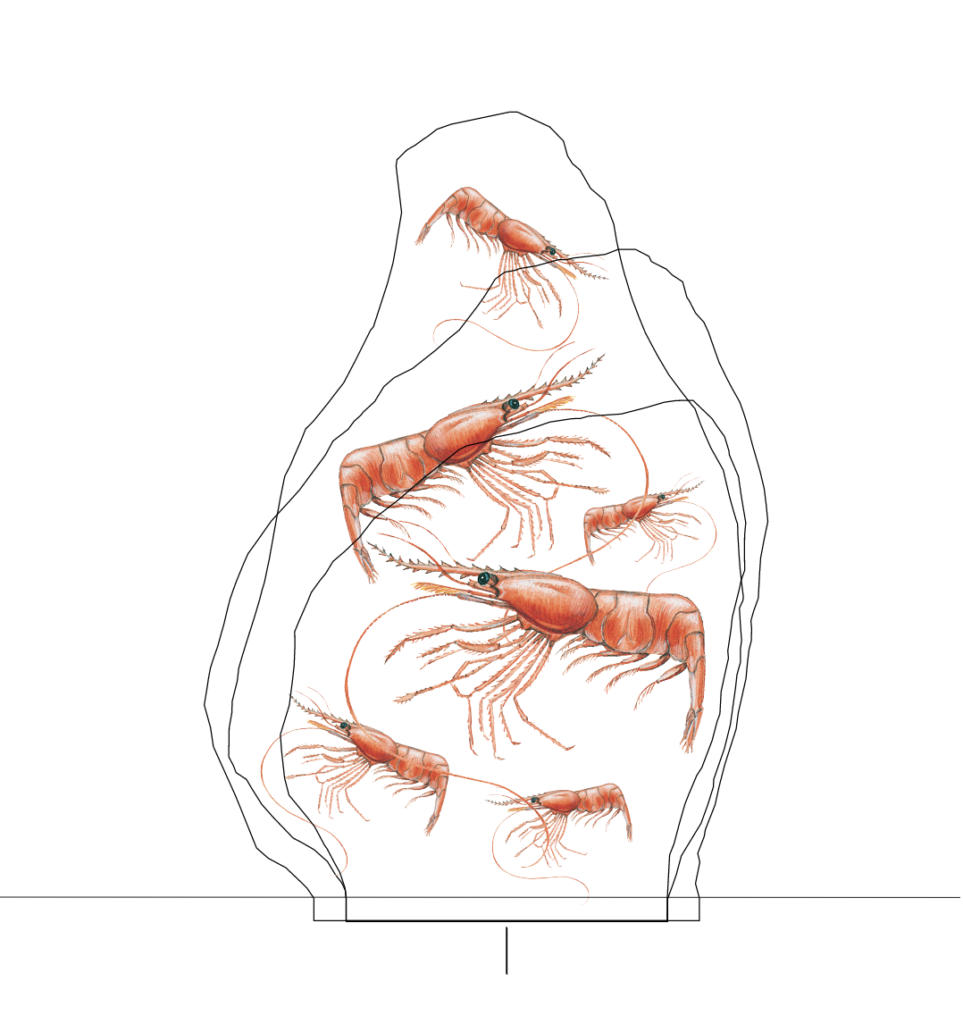
THE NORTHERN PRAWN

- The northern prawn is a hermaphrodite
- Lawnmowers of the sea ice – the small crustaceans
- The opilio crab
You solve the tasks by using
- Text
- Audio
- Drawing tools
- Pictures
This part is based on pp. 22-29 – there you will find information about the subject.
Read about the northern prawn, krill and the opilio crab.
The northern prawn is found everywhere along the coasts of Greenland and is a common species of prawn in the Disko Bay.
It changes sex from male to female after the first five to six years of its life.
Prawns are an important source of food in the arctic food web, and play a substantial role in the fishing industry and the economy of Ilulissat.

The northern prawn is a protandrous hermaphrodite. What does that mean?
What problems might there be in relation to fishing of the northern prawn and its change of sex?
What evolutionary mechanisms might explain the sex change of the northern prawn?
Krill is an important organism in the arctic marine food web.
They are 1.5-5 cm big and 1 m³ of water may contain 10-30,000 krill.

Krill feed on the phytoplankton under the sea ice but it also delivers food to animals at the bottom as its stools sink down.
They have stiff brushes on the tips of their legs and use these to “graze” the layer of algae.
What niche does krill have, and how has it adapted to its niche?
Who in the marine food web eats krill?
On page 12 the world under the ice is called the grassy plains of the arctic area – what can krill be compared to?
The Opilio, or snow crab can live in areas with temperatures as low as -1°C.
You can tell females from males by the size of their shell.

After mating the female keeps the 20-150,000 eggs for 1-2 years under her abdomen before they are hatched, depending on the temperature.
The larvae eat phytoplankton.
Why is it necessary for the crab to have 20-150,000 eggs?
Does a crab keep the same shell all life?
Where in the marine food web would you place the opilio crab?
The northern prawn is found everywhere along the coasts of Greenland and is a common species of prawn in the Disko Bay.
It changes sex from male to female after the first five to six years of its life.
Prawns are an important source of food in the arctic food web, and play a substantial role in the fishing industry and the economy of Ilulissat.

The northern prawn is a protandrous hermaphrodite. What does that mean?
What problems might there be in relation to fishing of the northern prawn and its change of sex?
What evolutionary mechanisms might explain the sex change of the northern prawn?
Krill is an important organism in the arctic marine food web.
They are 1.5-5 cm big and 1 m³ of water may contain 10-30,000 krill.

Krill feed on the phytoplankton under the sea ice but it also delivers food to animals at the bottom as its stools sink down.
They have stiff brushes on the tips of their legs and use these to “graze” the layer of algae.
What niche does krill have, and how has it adapted to its niche?
Who in the marine food web eats krill?
On page 12 the world under the ice is called the grassy plains of the arctic area – what can krill be compared to?
The Opilio, or snow crab can live in areas with temperatures as low as -1°C.
You can tell females from males by the size of their shell.

After mating the female keeps the 20-150,000 eggs for 1-2 years under her abdomen before they are hatched, depending on the temperature.
The larvae eat phytoplankton.
Why is it necessary for the crab to have 20-150,000 eggs?
Does a crab keep the same shell all life?
Where in the marine food web would you place the opilio crab?



